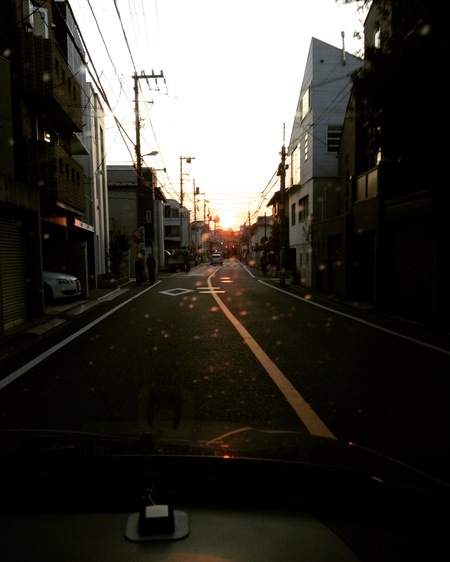敷地の文脈/コンテクストの読み取りvol.2
道はからっぽの空間として、手をつけることができないという点で完全である。そして、そこにアクティビティーが存在する。
そもそも道はアクティビティーのためにある。人が歩き、車が通り、今いる場所とどこかをつなげてくれる。
そう考えると、道は交通空間として、そして、都市空間として、また情緒的なことを含む空間としても扱うことができるだろう。
道路は土木の分野だが、からっぽの空間として捉えれば建築行為の一部に十分に組み入れることができるはず。
だが、道はからっぽの空間で異なるアクティビティーが発生するが、建築行為を計画する側からは何も手を加えることができないという点で完全な存在とみなすことができる、完全な秩序を持った存在である。
だから、道をコンテクストとして扱うならば、その完全な秩序を崩し、乱し、不完全にして取り込めば良い。そうすることによって、敷地内に異なるアクティビティーを発生させる種になるかもしれない。
からっぽであり、何か手を加えることができる、それで不完全性を担保し、前面道路と同じ秩序、例えば、幅やレベル、隅切りなど、を持ち、前面道路と連続性がある道空間を敷地内につくることも、コンテクストを取り込むひとつの手であるかもしれない。
"Site context / context reading vol.2"
The road is complete in that it can not hold hands as an empty space. And, there are activities.
In the first place there is a way for the activity. People walk, cars connect with streets, where they are and somewhere.
If so, the road could be treated as a transportation space, as an urban space, and as a space containing emotional things.
Although the road is the field of civil engineering, it should be able to fully incorporate it into a part of building action if it is regarded as an empty space.
However, while the road generates different activities in the empty space, there is perfect order that can be regarded as complete existence in that it can not add anything from the planning side of the building action .
So, if you deal with the way as a context, you can destroy its complete order, disturb, incompletely capture it. By doing so, it may become a species that generates different activities in the premises.
It's empty and you can add something with it, so guarantee imperfections, and have the same order as the front road, such as width, level, corner cutting, etc., with a road space that is continuous with the front road Making it on the premises may be one way to capture the context.

